WINE TASTING.
A wine tasting is a systematic sensory evaluation process carried out by a winemaker to analyze and appreciate the organoleptic characteristics of a wine. This involves examining the wine with all of the senses, including sight, smell, taste and, in some cases, touch. Below are the key steps in a wine tasting for a winemaker:
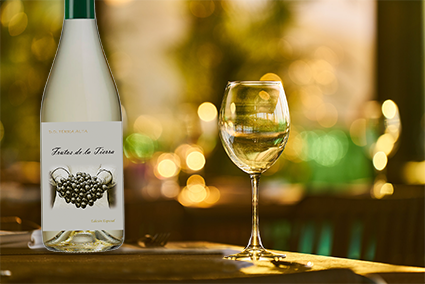
- Preparation:
- Selecting appropriate glasses: Wine glasses designed specifically for the type of wine to be tasted are chosen. The glasses allow correct oxygenation and concentration of aromas.
- Wine temperature: Wine is served at the appropriate temperature, which varies depending on the type of wine (white, red, sparkling, etc.).
- Cleanliness: The glasses must be clean and free of residual odors that could interfere with the tasting.
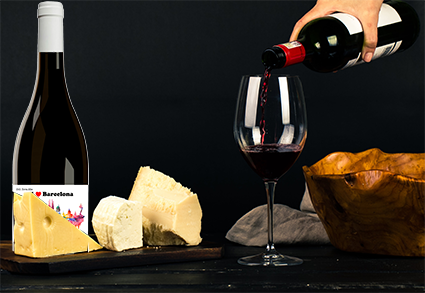
- Visual evaluation:
-
- It is the first of the phases in wine tasting.
- Good lighting is necessary and if possible natural. Also have a white background on which to tilt the glass, to be able to appreciate the intensity of color and its tone.
- Color observation: The color of the wine is analyzed, evaluating its intensity, tone and brightness. This can provide information on the age and variety of grape used.
- It can also give us information about the wine such as the alcohol content, seeing the tear or layer and the speed of movement.
- We can see possible oxidation in white wines, if the wine has been aged in wood,
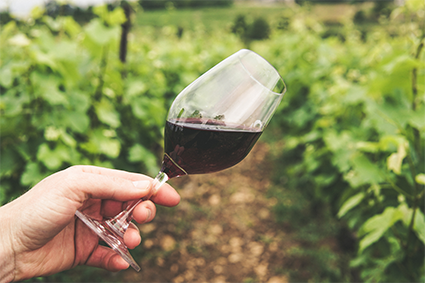
- Olfactory evaluation:
- Sip the wine and distribute it throughout your mouth before swallowing or spitting it out.
- Smell phase in a still glass: The glass is gently rotated to release the aromas and smelled without shaking the wine. Notes of fruits, flowers, spices, wood, minerals, among others, are sought.
- Smell phase in shaken glass: The glass is shaken to intensify the aromas and the resulting olfactory notes are evaluated.

- Taste evaluation
- Attack: The first impression in the mouth is evaluated, paying attention to acidity, salinity, sweetness and bitterness.
- Development: It is analyzed how the flavor evolves on the palate, identifying the notes of fruit, tannins, body and balance.
- Finish: The persistence of the flavor (finish or aftertaste) and any change in the aftertaste is evaluated.
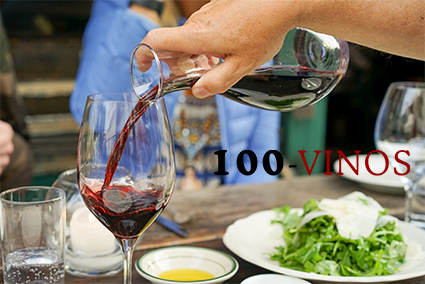
- Note-taking: Throughout the process, detailed notes are taken of visual, olfactory and gustatory impressions. These notes help to characterize the wine and make important decisions about its quality and evolution, even to make corrections.
- Global evaluation: At the end of the tasting, a general evaluation of the wine is made, taking into account its complexity, balance, structure and aging potential.
- Comparison and evaluation: Winemakers can also compare wine with others of the same variety, region or style to contextualize its quality and style.
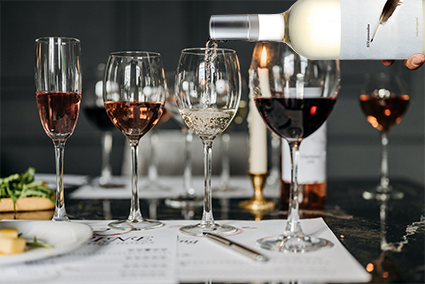
A wine tasting by a winemaker is essential to evaluate and understand the unique characteristics of a wine, which helps in decision making in the winery, from production, correction and even marketing. It is also essential for the identification of possible defects in the wine and to ensure consistency of quality in successive batches.
The tasting sheet is the document in which the winemaker values numerically (points) on a scale of values or describes the sensations transmitted by the wine. There are numerous models depending on how descriptive they are.
Tasting note from Bodega 100-Vinos (FILE)
| PARTICIPANT: Date: |
||||
| TASTING SHEET | VARIETY: | |||
| VINE-GROWING AREA: Terra Alta | ||||
| VINTAGE: 2020 | ||||
| GUY: | ||||
| VISUAL PHASE | Color | Colorless – Yellow – Topaz – Gold – Reddish – Ruby Red – Cherry- Tile | ||
| Cleanliness | Bright – Clear – Clean – Luminous – Fine – Transparent | |||
| Vivacity | Vivid – Clear – Clear – Fresh – Bright – Doubtful – Dull | |||
| Intensity | Pale – Light – Weak – Light – Medium – Strong – Dark | |||
| WINE SCORE (0-2) | ||||
| OLFACTORY PHASE | Intensity | Low – Sufficient – Medium – High | ||
| Quality | Rude – Ordinary – Correct – Linear – Complex | |||
| Varietals | Fruity – Floral – Vegetable | |||
| Breeding | Fruity – Floral – Wood – Confectionery | |||
| WINE SCORE (0-3) | ||||
| TASTE PHASE | Intensity | Low mid High | ||
| Quality | Unpleasant – Mature – Complex – Powerful | |||
| Body | Light – Thin – Medium – Rich – Fleshy – Structured – Warm | |||
| Aromas in the mouth | Intense – Quality – Full | |||
| Persistence | Short – Acceptable – Long-lasting – Frank – Unpleasant | |||
| WINE SCORE (0-5) | ||||
Detail of the wine tasting
That sensory and analytical experience that involves the evaluation of different aspects of a wine to appreciate its quality, character and complexity. This process involves a series of steps and techniques that allow tasters to analyze and describe the characteristics of the wine in a systematic way. We will explore in detail every aspect of a wine tasting, from the preparation and choice of glasses to the visual, olfactory and gustatory evaluation, as well as the different stages of the tasting, the appreciation of red, white, rosé and sparkling wines, and finally , some recommendations on wine pairings and conservation.
1.1. History of Wine Tasting
1.2. Objectives of the Wine Tasting
- Preparation for the Wine Tasting
2.1. Choice of Cups
2.2. Wine Temperature
23. Lighting and Environment
- Stages of Wine Tasting
3.1. Visual Phase
3.1.1. Color
3.1.2. Viscosity and Tears
3.2. Olfactory Phase
3.2.1. Primary Aromas
3.2.2. Secondary Aromas
3.2.3. Tertiary Aromas
3.3. Gustatory Phase
3.3.1. Initial Taste
3.3.2. Medium Taste
3.3.3. Final Taste
3.3.4. Aftertaste
- Types of Wines and Tasting Techniques
4.1. Red Wine Tasting
4.1.1. Evaluation of Young Red Wines
4.1.2. Evaluation of Crianza and Reserva Red Wines
4.2. White Wine Tasting
4.2.1. Evaluation of Young White Wines
4.2.2. Evaluation of Crianza and Reserva White Wines
4.3. Rosé Wine Tasting
4.4. Sparkling Wine Tasting
4.4.1. Champagne
4.4.2. Digging
4.4.3. Prosecco
- The Importance of Pairing
5.1. Principles of Pairing
5.2. Pairing with Red Wines
5.3. Pairing with White Wines
5.4. Pairing with Sparkling Wines
- Wine Conservation
6.1. Storage temperature
6.2. Storage Position
6.3. RH
6.4. Light and Vibrations
- Conclusions and Final Recommendations
- Introduction to Wine Tasting
Wine tasting is an activity that has existed for centuries and has become a specialized discipline in wine evaluation. Historically, it has been used by oenologists, sommeliers and wine lovers to evaluate and appreciate the qualities of a specific wine. However, today, wine tasting is also an accessible experience for anyone interested in deepening their knowledge and appreciation of wine.
1.1. History of Wine Tasting
The history of wine tasting dates back to ancient civilizations, where wine played a central role in everyday life, religious celebrations and rituals. The ancient Egyptians, Babylonians and Greeks, for example, had a sophisticated appreciation for wine and developed tasting rituals to evaluate its quality.
The development of wine tasting as a formal discipline is largely attributed to Christian monks in the Middle Ages, who were responsible for wine production in monasteries. They began documenting their observations and descriptions of wines, laying the foundation for modern terminology and tasting techniques.
Over time, wine tasting has become more structured and formal, and has evolved to include a series of steps and evaluation methods that allow for a deeper appreciation of wines.
1.2. Objectives of the Wine Tasting
Wine tasting has several key objectives:
– Evaluate quality: The main objective of wine tasting is to evaluate the quality of a specific wine. Tasters seek to identify the positive and negative attributes of the wine, including its flavor, aroma, structure and balance.
– Describe the character: Wine tasting allows you to describe the unique character of a wine, including its specific aromas and flavors, as well as its general profile.
– Compare and differentiate: Tasters can compare different wines to identify differences and similarities between them. This is useful for determining which wine is most suitable for a specific occasion or pairing.
– Learn and educate: Wine tasting is an invaluable learning tool for those interested in learning more about wine. It helps develop the palate and understand the different styles and varieties of wine.
- Preparation for the Wine Tasting
Before starting a wine tasting, it is important to make a series of preparations to ensure that the experience is optimal and that all the characteristics of the wine can be appreciated.
2.1. Choice of Cups
Tasting glasses are an essential part of the wine tasting experience. Choosing the right glass can significantly improve the perception of the aroma and flavor of the wine. Some important considerations for tasting glasses include:
– Shape: Wine glasses are designed with different shapes to highlight the characteristics of each type of wine. Red wine glasses typically have a broader shape with a wider rim, while white wine glasses have a narrower rim and a more streamlined shape. Sparkling wine glasses are usually elongated flutes.
– Material: Tasting glasses are usually made of fine crystal or quality crystal. Crystal is preferable to glass due to its greater transparency and ability to transmit the aromas and flavors of the wine more accurately.
– Size: The size of the cup is also important. It should be large enough to allow oxygenation of the wine, which releases aromas and improves its flavor, but not so large that it dissipates the aromas quickly.
– Cleaning: Before using the glasses, it is essential to ensure that they are clean and free of residual odors that could affect the tasting. The glasses should be washed in warm water without harsh detergents, then rinsed thoroughly.
2.2. Wine Temperature
Wine temperature is a critical factor that can significantly affect its perception. Wines must be served at the appropriate temperature to highlight their characteristics. Recommended temperatures vary depending on the type of wine:
– Red Wines: They are served at room temperature or slightly cool, generally between 10°C and 16°C. Young reds can be served at the lower temperature, while more structured and aged reds benefit from warmer temperatures.
– White Wines: They are generally served at cooler temperatures, between 6°C and 12°C. Lighter whites, such as Sauvignon Blanc, are served colder than full-bodied whites, such as Chardonnay.
– Sparkling Wines: Sparkling wines, like champagne, are served at even cooler temperatures, around 6°C to 8°C.
To achieve these temperatures, wine coolers, ice buckets, or refrigerators can be used before tasting.
23. Lighting and Environment
The environment in which the wine tasting takes place is also important. Attention should be paid to lighting and other environmental factors to ensure an optimal experience:
– Lighting: Lighting must be adequate to accurately evaluate the color of the wine. Natural light or a bright white light is ideal for seeing the nuances and clarity of the wine.
– External odors: The presence of strong odors in the tasting room should be avoided, as they can interfere with the perception of the wine’s aromas. Avoid smoking or cooking near the tasting area.
– Noise: A quiet environment is preferable for wine tasting, as it allows adequate concentration. Loud noises or distractions can negatively affect the experience.
Once these preparations have been made, you are ready to begin the wine tasting. The tasting experience is divided into three main stages: the visual phase, the olfactory phase and the gustatory phase.
- Stages of Wine Tasting
Wine tasting is divided into three main phases, each of which focuses on the evaluation of different aspects of the wine. These stages are described in detail below:
3.1. Visual Phase
The visual phase is the first stage of wine tasting and refers to the evaluation of the appearance of the wine in the glass. During this phase, different aspects of the wine are observed that provide information about its quality and condition.
3.1.1. Color
Wine color is one of the first visual indicators that tasters observe. It provides information about the age of the wine, its grape variety and its production process. Some important aspects to take into account when evaluating wine color are:
– Intensity: Refers to the depth of the color and can vary from a light to a dark color. The intensity of the color can indicate the concentration of the compounds in the wine.
– Tonality: Tonality refers to the specific nuances of the color of the wine. It can be red, purple, amber, gold, among others. These nuances can reveal information about the grape variety and ripeness.
– Cleanliness: Cleanliness refers to the clarity of the wine. A clear, bright wine is generally considered to be of higher quality than a cloudy or sedimenty wine.
– Viscosity and Tears: By tilting the glass, you can observe the “tears” or “legs” that form on the walls of the glass. The viscosity and density of these tears can indicate the alcohol and sugar content of the wine.
3.1.2. Viscosity and Tears
Wine viscosity refers to its thickness or texture in the glass. This is an important indicator of the concentration of alcohol and sugars in the wine. More viscous wines tend to leave slower, denser tears on the walls of the glass, indicating a greater amount of alcohol and residual sugar. On the other hand, lighter wines will have thinner and faster tears.
Observing tears can also provide information about the structure and quality of the wine. Slow, dense tears can be a sign of a well-structured wine with good texture in the mouth.
3.2. Olfactory Phase
The olfactory phase is one of the most important parts of wine tasting, as aromas play a crucial role in flavor perception. During this stage, tasters evaluate the aromas emanating from the wine.
3.2.1. Primary Aromas
Primary aromas are those that come directly from the grapes and the fermentation process. Some of the common primary aromas in wines include:
– Fruits: Fruit aromas are a common characteristic in many wines. These can range from fresh red fruits, such as strawberries and cherries, to darker, riper fruits, such as blackberries and plums.
– Flowers: Wines can have floral aromas reminiscent of flowers such as violet, jasmine or rose.
– Herbs: Some wines show herbaceous notes that may be reminiscent of fresh or dried herbs, such as thyme or mint.
– Spices: Wines can also have spicy aromas, which can range from black pepper to cinnamon and clove.
– Minerals: White wines, in particular, can have mineral aromas reminiscent of wet stone or chalk.
During the olfactory phase, tasters will deeply inhale the aroma of the wine and try to identify these primary aromas. It is important to remember that the perception of aromas can vary depending on the individual, so descriptions can be subjective.
3.2.2. Secondary Aromas
Secondary aromas are those that develop during the aging of the wine in oak barrels or during its aging in the bottle. These scents are often more complex and subtle than primary scents and may include:
– Vanilla notes: Vanilla is a common aroma associated with aging in oak barrels.
– Toasting notes: The toasted aromas may be reminiscent of toasted bread, coffee or cocoa and develop in the oak barrels during aging.
– Leather notes: Some wines may have leather aromas, which provide complexity and sophistication.
– Tobacco Notes: Dry or cigar tobacco aromas are often found in aged wines.
– Notes of dried fruits: Aromas of dried fruits, such as walnuts or almonds, can be characteristic in aged wines.
3.2.3. Tertiary Aromas
Tertiary aromas are those that develop during prolonged aging in the bottle. These aromas are even more subtle and complex than secondary aromas and may include:
– Earth notes: Earthy or wet earth aromas are characteristic of some aged wines.
– Aged leather notes: As the wine ages, leather aromas can become more pronounced and sophisticated.
– Notes of exotic spices: Some wines can develop aromas of exotic spices, such as cloves or nutmeg.
– Balsamic notes: Balsamic aromas, such as eucalyptus or mint, can be characteristic of certain aged wines.
During the olfactory phase, tasters will attempt to identify and describe these secondary and tertiary aromas to gain a complete understanding of the wine’s aromatic profile.
3.3. Gustatory Phase
The taste phase is the last stage of wine tasting and focuses on evaluating the flavor and texture of the wine in the mouth.
3.3.1. Initial Taste
Initial taste refers to the first impression you have when tasting the wine. Some important aspects to consider at this stage include:
– Sweetness: It is evaluated whether the wine is sweet, dry or has some degree of residual sweetness. This is especially relevant in white and sparkling wines.
– Acidity: Acidity refers to the freshness and liveliness of the wine in the mouth. White wines usually have more pronounced acidity than red wines.
– Tannins: Tannins are compounds that come from the skins and seeds of grapes, and are mainly found in red wines. Tannins can provide a sensation of dryness and structure in the mouth.
– Body: The body of the wine refers to its mouthfeel, which can range from light and elegant to full and fleshy.
– Alcohol: The alcohol content can influence the perception of heat and intensity in the mouth.
3.3.2. Medium Taste
The medium taste phase refers to the experience in the mouth while chewing and savoring the wine. During this stage, tasters evaluate the complexity and evolution of the flavors.
– Intensity: The intensity of the flavors and their persistence in the mouth are evaluated.
– Secondary flavors: The aim is to identify secondary flavors that may arise after the initial taste, such as ripe fruits, spices or tertiary notes.
– Balance: It is considered whether the different components of the wine, such as acidity, tannins and alcohol, are in balance.
– Texture: The texture of the wine in the mouth is evaluated, which can vary from soft and silky to rough and tannic.
3.3.3. Final Taste
The final taste phase occurs after swallowing the wine or after expectorating it, if necessary. At this stage, the persistence of flavors in the mouth is evaluated and the length and quality of the finish is considered.
– Length: Length refers to how long flavors persist in the mouth after swallowing. High quality wines usually have a longer length.
– Finish: The character of the wine’s finish is described, which can be dry, bittersweet, bitter or soft.
– Complexity: It is evaluated whether the wine reveals new flavors or nuances in the finish.
3.3.4. Aftertaste
The aftertaste is the last stage of the gustatory phase and refers to the flavors and aromas that persist in the mouth after having tasted the wine. During this stage, tasters may perceive additional nuances and experience an evolution in flavors.
Together, the taste phase provides a complete evaluation of the flavor and texture of the wine, allowing tasters to appreciate its complexity and quality.
- Types of Wines and Tasting Techniques
Wine tasting is a versatile activity that can be applied to a wide variety of types of wine. Each type of wine has its own characteristics and specific tasting techniques. Below are some of the most common tasting techniques for different types of wine:
4.1. Red Wine Tasting
Red wine tasting is one of the most popular and applies to a wide variety of wines, from young and fresh reds to aged and complex reds. Some specific techniques for tasting red wines include:
4.1.1. Evaluation of Young Red Wines
– Color: In young reds, a more intense and bright color is sought, with purple or vibrant red nuances.
– Primary aromas: Attention is paid to fresh fruit aromas, such as cherry, strawberry and raspberry.
– Tannins: Tannins tend to be softer in young reds, which provides a softer texture in the mouth.
4.1.2. Evaluation of Crianza and Reserva Red Wines
– Color: Aged reds usually have deeper colors and more mature tones, such as ruby or garnet.
– Secondary and tertiary aromas: The aim is to identify the aromas of aging in barrels and the tertiary notes, such as vanilla, leather and tobacco.
– Tannins: Aged reds can have more pronounced tannins and greater structure in the mouth.
4.2. White Wine Tasting
Tasting white wines focuses on evaluating the freshness, acidity and fruit flavors of these wines. Some specific techniques for white wine tasting include:
4.2.1. Evaluation of Young White Wines
– Color: A pale yellow or golden color is sought, with green nuances in some cases.
– Primary aromas: Attention is paid to the aromas of citrus fruits, such as lemon and lime, as well as floral and herbal notes.
– Acidity: Acidity is a key aspect in young whites and must be fresh and vibrant.
4.2.2. Evaluation of Crianza and Reserva White Wines
– Color: Aged whites can have deeper, golden colors.
– Secondary and tertiary aromas: Aromas of barrel aging and tertiary notes, such as nuts and honey, are sought.
– Texture: Aged whites can have a silkier and more complex texture in the mouth.
4.3. Rosé Wine Tasting
Tasting rosé wines focuses on evaluating the freshness and intensity of fruit flavors. Rosés are usually light and pleasant to drink, and are served at cool temperatures to highlight their vibrancy.
4.4. Sparkling Wine Tasting
Tasting sparkling wines is a special experience due to its effervescence. Sparkling wines, such as champagne, cava and prosecco, are evaluated differently than other types of wine:
4.4.1. Champagne
– Bubbles: The quality and persistence of the bubbles in the glass, as well as their fineness, are observed.
– Aromas: Aromas of yeast, toasted bread and fruits such as apple and pear are sought.
– Taste: Acidity and balance are key aspects when tasting champagne.
4.4.2. Digging
– Bubbles: Fine and persistent bubbles in the glass are evaluated.
– Aromas: Aromas of white fruits are sought, such as apple and pear, as well as citrus and floral notes.
– Taste: Attention is paid to acidity and freshness, as well as the length of the finish.
4.4.3. Prosecco
– Bubbles: The effervescence is evaluated, which is usually lighter than that of champagne.
– Aromas: Fruit aromas such as peach, apricot and pear are sought, as well as floral notes.
– Taste: The freshness and lightness in the mouth stands out.
- The Importance of Pairing
Pairing is the practice of combining foods and wines in ways that complement and enhance each other. Choosing the right wine to accompany a meal can significantly enhance the dining experience. Some key pairing principles include:
5.1. Principles of Pairing
– Complement: Wine and food should complement each other, meaning their flavors should harmonize and enhance each other.
– Balance: Balance is important, and the wine should not overwhelm or dominate the flavor of the food, nor vice versa.
– Contrast: Sometimes a contrast can be effective, such as an acidic wine with fatty dishes or a sweet wine with desserts.
– Intensity: The intensity of the wine and food must be in tune. Delicate dishes tend to pair better with light wines, while more robust dishes can go well with more powerful wines.
5.2. Pairing with Red Wines
– Red meats: Red wines usually pair well with red meats such as steak or lamb. A Cabernet Sauvignon or a Malbec are popular options.
– Mature cheeses: Strong, mature cheeses, such as blue cheese or aged cheddar, can be complemented with robust red wines.
– Dishes with tomato-based sauces: Red wines with good acidity can balance tomato sauces in pasta dishes or pizzas.
5.3. Pairing with White Wines
– Fish and seafood: Fresh white wines with acidity, such as a Sauvignon Blanc or an oak-free Chardonnay, are usually good choices with fish and seafood dishes.
– White meats: White meats, such as chicken or turkey, can pair well with light and aromatic whites.
– Vegetarian dishes: White wines can be a versatile option for vegetarian dishes, especially if they have herbal or citrus flavors.
5.4. Pairing with Sparkling Wines
– Appetizers and seafood: Sparkling wines are an excellent choice as an aperitif and pair well with fresh seafood, oysters and caviar.
– Light dishes: The lightness and acidity of sparkling wines make them ideal for light dishes such as salads and sushi.
– Desserts: Dry or semi-dry sparkling wines can pair well with desserts such as fresh fruits or light pastries.
Pairing is a creative and enjoyable way to enjoy both wine and food, and can expand the tasting experience by harmoniously combining different flavors and textures.
- Wine Conservation
Proper conservation of wine is essential to maintain its quality and evolution over time. The following are some important aspects to consider when preserving wine:
6.1. Storage temperature
Wine must be stored at a constant and appropriate temperature. The ideal is a storage temperature between 10 and 18 for red wines and white wines. The temperature should be as constant as possible to avoid fluctuations that could damage the wine.
6.2. Storage Position
Wine bottles should be stored horizontally, so that the cork is in contact with the wine. This prevents the cork from drying out and allowing oxygen into the bottle.
6.3. RH
The relative humidity in the cellar or storage location should be maintained between 60% and 70%. This helps keep the cork moist and prevents it from drying out and allowing air in.
6.4. Light and Vibrations
The wine should be protected from direct sunlight and vibrations. UV light can damage wine by causing undesirable chemical reactions, while vibrations can disturb sediment in bottles.
- Conclusions and Final Recommendations
Wine tasting is a fascinating activity that combines art and science to evaluate and appreciate wines at their finest. Through the stages of visual, olfactory and gustatory tasting, tasters can explore the nuances and complexity of wines and develop a sophisticated palate.
Choosing the right glass, serving temperature, lighting and ambiance are key aspects to ensuring a successful tasting experience. Additionally, food pairing can elevate the experience by harmoniously combining wines and foods.
Proper storage of wine is essential to preserve its quality over time, and factors such as temperature, humidity and storage position must be taken into account.
Wine tasting is an enriching activity that allows wine lovers to deepen their knowledge and appreciation of this beverage. Each bottle of wine has a story to tell, and tasting is the way to discover and enjoy those stories in every sip.
